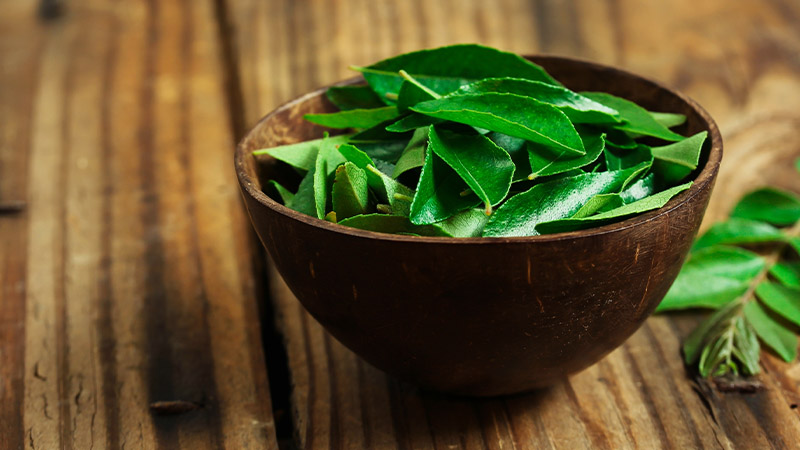A look at Asian ingredients readily available in Singapore, to discover their traditional uses, health benefits and ways to incorporate them into Western home cooking.
This month’s ingredient: Curry Leaves
Aliases: sweet neem leaves, kari patta or meetha neem

What are they?
The soft, pointed green leaves of the curry tree, Murraya Koenigii, which is native to India and grows up to six metres high. Curry leaves are essential in Indian cooking and are used in a similar way to the Western bay leaf for the aroma they release, after which the leaves are often discarded. An old Indian saying likens someone to a curry leaf if they are being used as a means to an end, and are “discarded” afterwards. The leaves are actually edible, however, and impart medicinal and Ayurvedic benefits.
The Flavour
Curry leaves have a very mild taste that can be slightly bitter; they are known for their distinctive smell.
Where do you find them?
In the refrigerated section in supermarkets. Curry leaves are sold on the stem in packets and keep for a couple of weeks in the fridge. As always, fresh is best; look for dark green leaves. Frozen leaves, dried leaves or curry leaf powder can be used, but their smell and taste are inferior.
Cook with it at home
Strip the leaves from their stalk, crush gently between your fingers to release their aromatic oils, then fry.
Recipe: Pan-fried Halibut in Curry Leaf Butter
A simple yet elegant dish requiring minimal effort. The curry leaves impart a very subtle flavour to the butter, and as they fry they crisp up adding an interesting crunchy texture – an Asian take on the classic sauce meunière. Serves 2
Ingredients:
• 2 halibut fillets
• 1 tablespoon flour seasoned with pepper and salt
• 2 tablespoons butter
• 1 tablespoon canola oil
• Handful of curry leaves
• Juice from a fresh lemon or lime
Method:
1. Pat fish dry, sprinkle with the seasoned flour and dust off excess.
2. Melt one tablespoon of the butter in a large non-stick pan over a medium heat. Add the fish and cook on one side for around five minutes until lightly browned. Cook for a further three minutes on the other side. Remove fish and keep warm.
3. Add the oil and when hot, add the curry leaves. The leaves will hiss and spit so stand back. Cook until leaves crisp up but remain green, then add the remaining butter and let it melt. Remove pan from heat and stir in the lemon juice.
4. Serve the halibut drizzled with the sauce, accompanied by steamed jasmine rice and some greens.
Like this? Read more at our wine and dine section
Don't miss out on the latest events, news and
competitions by signing up to our newsletter!
By signing up, you'll receive our weekly newsletter and offers which you can update or unsubscribe to anytime.



